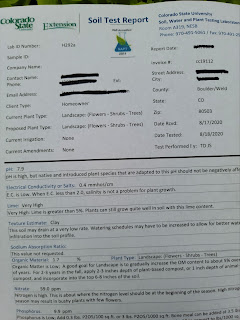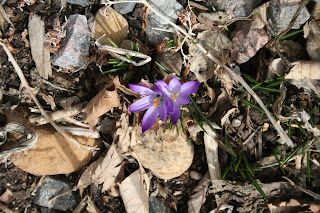Amending your garden soil in early spring is key to having a healthy, productive tomato and vegetable crop this season. A good soil amendment will make your existing soil healthier and more fertile by improving soil texture, helping to lower pH (makes your soil more acidic) and encouraging worms and soil microbes to flourish. Healthy soil promotes deeper root systems and makes nutrients more available to your vegetables. When it comes to choosing soil amendments, it’s important to use Colorado-based products that are specifically designed to work in our clay-based soils. That’s why we recommend and sell locally produced soil amendments and fertilizers from The Richlawn Company Organix Supply. For over forty years, The Richlawn Company has been crafting garden and lawn products specifically designed to work in our clay-heavy soils.
Located in Platteville, Colorado the original EKO Compost was developed in 1977 for use in vegetable and flower gardens, new lawns and for planting trees and shrubs. From that beginning, Richlawn has continued to expand their facility to accommodate the growing demand for their organic products. Recent improvements included additional outside storage space for 7,500 pallets of bagged soils (375 truckloads). They now have 3.3 acres of land that is used for outside soils storage. This is in addition to over 1,000 pallets of fertilizers that are stored inside warehouses. One of our favorites, Earth Essentials products were developed in response to consumer requests for quality products they could use to improve their garden soil organically.
Rich in trace minerals, organic material and beneficial microbes, Earth Essential’s Cow and Compost and Sheep, Peat and Compost improves the soil’s physical and biological health, resulting in healthier tomato and vegetable plants and better yields. Both products are thoroughly composted, eliminating weed seeds. When it comes to applying either Sheep, Peat and Compost or Cow and Compost to your garden bed, a good rule of thumb is to add about two inches at any one time. One bag of Sheep, Peat and Compost will cover ten square feet, two inches deep. You can use this as a basis for calculating how much you'll need to buy to amend your current bed or start a new vegetable bed. For example: a one hundred square foot vegetable bed would require ten bags of Seep, Peat and Compost in order to cover the bed with two inches of compost.
EKO Raised Bed mix was developed in response to the popularity of raised bed gardening. This mix of organic ingredients is designed to promote growth and optimize tomato and vegetable crop production in raised beds as well as large containers. For a ten cubic foot raised bed or container, you’ll need seven bags of Raised Bed Mix. A fifteen cubic foot raised bed or container will require ten bags.
If you have questions about which Earth Essentials and EKO products you should buy or how much you need for your vegetable garden or raised beds, please stop in. We’ll be glad to help you. While you’re in the store, we can tell you about the other great lawn and garden products made by Richlawn, including Pro Rich Lawn Fertilizers and Revive. One thing’s for certain. When it comes to improving your vegetable garden soil health, fertility and structure, you can count on the quality, organic products produced locally by The Richlawn Company.

22.jpg)
















